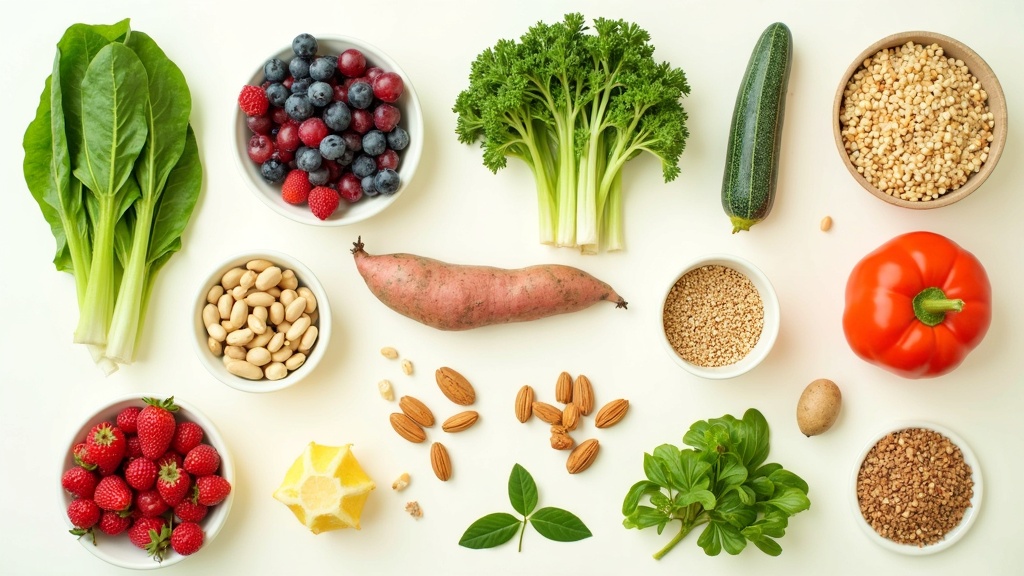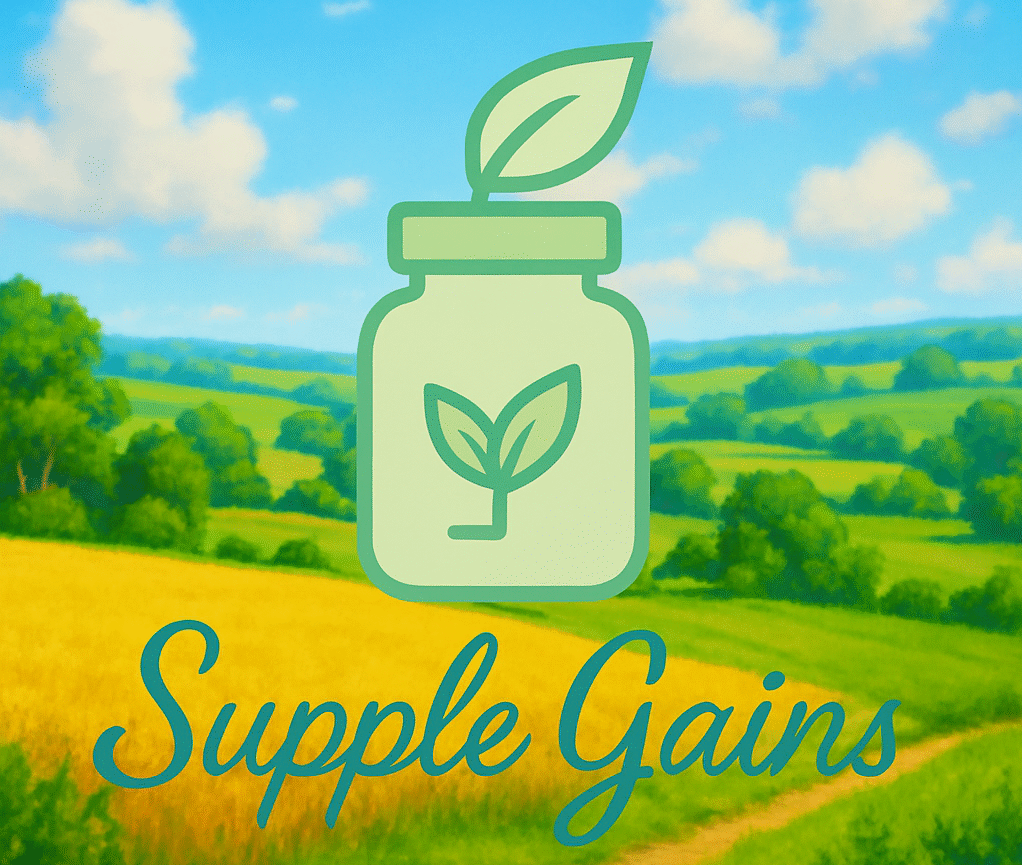Plantbased foods come packed with loads of benefits, but one thing that doesn’t get talked about enough is how much they can help decrease inflammation in the body.
Chronic inflammation often flies under the radar, but it’s been linked to lots of modern health challenges, including joint pain, heart issues, digestive problems, and even difficulty healing after injuries.
Switching your meals to focus on plant nutrients can be a pretty handy and natural way to help your body feel its best.
So, I’ll unpack the basics of inflammation and how eating more greens, berries, nuts, and grains can work in your favor, plus some smart ways to get started.

What Is Inflammation and Why Does It Matter?
Inflammation can actually be a good thing, especially when your body is healing a cut, fighting off germs, or repairing an injury.
The trouble starts when this response sticks around longer than it should.
Ongoing or chronic inflammation is a root cause of a bunch of health headaches, like arthritis, metabolic problems, skin issues, or even heart troubles.
If you’re dealing with brain fog, achy joints, digestive discomfort, or persistent fatigue, inflammation might be playing a sneaky role.
People often wonder where this chronic inflammation comes from.
Sometimes it’s triggered by stress, environmental pollutants, or not getting enough sleep.
However, the choices I make in my kitchen have the biggest influence.
That’s especially true if I’m loading up on processed foods or skimping on fiber and antioxidants.
How PlantBased Nutrition Helps Soothe Inflammation
Plantbased nutrition means filling your meals with fruits, vegetables, whole grains, beans, lentils, nuts, seeds, herbs, and spices.
What’s nextlevel cool is that these foods have tons of antioxidants, vitamins, minerals, and plant compounds (called phytonutrients) that help your cells recover and lower damaging inflammation.
Fiber is a superstar here, feeding the good bacteria in your gut and helping your immune system stay on track.
Plants also bring lots of water, which helps flush toxins. And, when you switch animalbased saturated fats for healthier plant fats, that alone helps keep inflammation from brewing.
Plus, plantbased eating naturally contains less cholesterol and lower sodium, helping with heart health and decreased water retention.
Simple Ways to Add More Anti-Inflammatory Foods
Adding in more plants doesn’t need to be complicated or boring. These simple swaps and habits can help cut down inflammation:
- Eat a rainbow: Different color fruits and veggies give your body a range of antioxidants and vitamins. Try mixing up berries, bell peppers, leafy greens, or sweet potatoes.
- Try whole grains: Instead of white bread or regular pasta, opt for oats, brown rice, quinoa, or barley. These grains are packed with fiber and important minerals.
- Add nuts and seeds: Throw sunflower seeds, walnuts, or chia seeds onto salads or oatmeal. Nuts and seeds bring healthy fats and other key nutrients.
- Lean on legumes: Beans, lentils, and chickpeas are filling, affordable, and loaded with fiber and antioxidants.
- Include herbs and spices: Turmeric, ginger, cinnamon, and garlic add flavor, while supporting your body’s natural healing process.
Adding fermented foods like pickles or sauerkraut is another smart move, as the probiotics help balance your gut.
Try to switch things up with seasonal produce to keep meals interesting, maximize nutrients, and keep your taste buds happy.
Quick Guide to Making the Switch
Adjusting your eating habits doesn’t have to be overwhelming. Here’s how I find it manageable:
- Start small: Begin with one plantbased meal a day or swap a snack. Even little steps add up over time and can show real results.
- Read labels: Some processed foods look plantbased but might contain sneaky additives that trigger inflammation (like refined oils or excess sugar).
- Batchcook ahead: Prepping grains, beans, and chopped veggies ahead of time makes it easier to build a quick meal when you’re hungry.
- Hydrate wisely: Drink more water instead of highsugar or processed drinks. Herbal teas can be a tasty upgrade, too.
- Mix things up: Explore new produce, nuts, and grains. Keeping things fresh and rotating your favorites means you’re less likely to fall back into the same old routine.
These shifts are usually easy to stick with once you get a groove going.
Your body’s response, such as better energy or clearer skin, might show up faster than you expect.
Having fun with new recipes and sharing meals with friends makes the change even easier.
Things to Keep in Mind When Going PlantBased
Just switching to plantbased foods doesn’t magically make everything perfect.
There are a few things worth considering to make the most of your new habits:
- Balance your nutrients: Make sure meals have protein, healthy fats, fiber, and a mix of vitamins. This helps keep blood sugar steady and energy up all day.
- Watch for hidden sugars or saturated fats: Even some plantbased products (like vegan baked goods or snack bars) sneak in added sugars or processed oils, which aren’t so helpful for your goals.
- Plan for variety: Eating the same foods every day isn’t as effective as mixing up your choices to cover all your nutritional needs.
- Monitor your body’s response: Some people notice changes in digestion or energy as their body adjusts. Keeping track of your meals and symptoms can help if you need to tweak things.
Getting Enough Protein
Plantbased diets can provide plenty of protein—you just need to know where to look.
Lentils, black beans, peanut butter, tofu, tempeh, and even quinoa are all proteinrich.
Spreading your protein sources throughout the day works well for most people, making it easier to feel full and maintain muscle.
Omega3s from Plants
People often ask about omega3 fatty acids, since fish is a wellknown source in traditional diets.
Plant options like chia seeds, flaxseeds, walnuts, and hemp seeds offer a form called ALA, which your body can use as a building block for other omega3 fats.
Including these regularly supports healthy inflammation levels.
Getting Vitamins B12 and D
Vitamin B12 comes mainly from animal products, so those who avoid these usually need a supplement to keep their energy and nerve health strong.
Vitamin D can also drop, especially in the winter or if you’re not outside much.
Chatting with a dietitian or healthcare pro helps figure out what you might want to add to your routine, keeping your diet safe and effective.
Advanced Tips and Tricks for Tackling Inflammation
If you’re feeling good about the basics, these eye-catching tips can dial down inflammation even further:
Focus on minimally processed foods: Choosing foods that are closer to their whole state means you’re getting more natural nutrients and fewer irritants.
For example, fresh fruit beats fruit snacks any day.
Bring in more fermented foods: Sauerkraut, kimchi, miso, and tempeh really support gut health, which has a big impact on inflammation.
Choose coldpressed oils wisely: Olive oil, avocado oil, and small amounts of flaxseed oil bring healthy fats to your plate.
It’s smart to steer clear of heavily processed vegetable oils, which can sometimes worsen inflammation.
Experiment with meal timing: Some people find that spreading out meals or even trying a gentle fasting window gives their digestive system a break and supports healing.
Listen to your body to see what feels best.
Making these tweaks can offer more support to an already antiinflammatory diet, especially for anyone managing chronic health complaints.
Sharing what works with others or keeping a journal can help you spot patterns and build lasting habits.
Everyday Benefits of Eating PlantBased for Inflammation
Plantheavy diets do more than just calm inflammation. They can also help:
- Improve joint comfort: Fresh produce and antiinflammatory fats can reduce irritation that’s linked to arthritis or muscle stiffness.
- Support clearer skin: Antioxidantrich foods (like berries and leafy greens) are linked to fewer skin issues and brighter complexions.
- Boost mood and focus: Some studies suggest less inflammation is linked to better overall brain function and lower risk of mood swings. People often describe a sense of mental clarity and steadier energy throughout the day.
- Lower risk of chronic disease: Eating this way is connected to fewer heart problems and better blood sugar regulation longterm.
Other advantages include better digestion, weight management, and even improved sleep for many people following a mostly plantbased routine.
Frequently Asked Questions
These are the questions that come up again and again when people are considering a plantbased approach to inflammation:
Question: How quickly can someone feel a difference after starting a plantbased diet for inflammation?
Answer:
For some folks, things like less joint pain, more regular digestion, or smoother skin might show up in a couple of weeks.
Others notice more gradual improvements in energy and mood. Consistency is what makes the biggest difference over time.
Question: Is it okay to go 100% plantbased, or does cutting back on animal products also help?
Answer:
Plenty of people see benefits even if they aren’t fully vegan.
Adding more plants and cutting down on processed meats, highfat dairy, or fried foods already helps control inflammation.
Question: Are there easy plantbased meals for busy lifestyles?
Answer:
Yes, for sure. Chili, grain bowls, big salads, and simple bean soups can all be prepped ahead and packed for work or school.
Hummus with veggie sticks is a classic snack that travels well, too.
Question: Can I keep eating my favorite foods while going plantbased?
Answer:
Absolutely. Many favorite comfort foods can be modified to be plantbased, like tacos made with beans or lentils, or pasta loaded with veggies.
You don’t have to give up what you love—just mix in more plants where you can.
Getting Started with PlantBased Nutrition for Inflammation
Reducing inflammation and feeling better doesn’t mean you need to become a professional chef or give up all your favorite foods.
Small, steady steps focused on whole grains, veggies, fruit, nuts, and beans make a real difference fast.
For most people, a plantbased diet feels more doable and satisfying than restrictive alternatives.
By paying attention to how your body responds, keeping meals simple, and staying curious about new foods and flavors, you’ll likely find that aches, sluggishness, or skin outbreaks start to fade.
It’s a super practical way to take better care of yourself, one tasty forkful at a time.
And as you keep at it, you’ll dig into an everwidening world of foods that help you feel your best each and every day.
